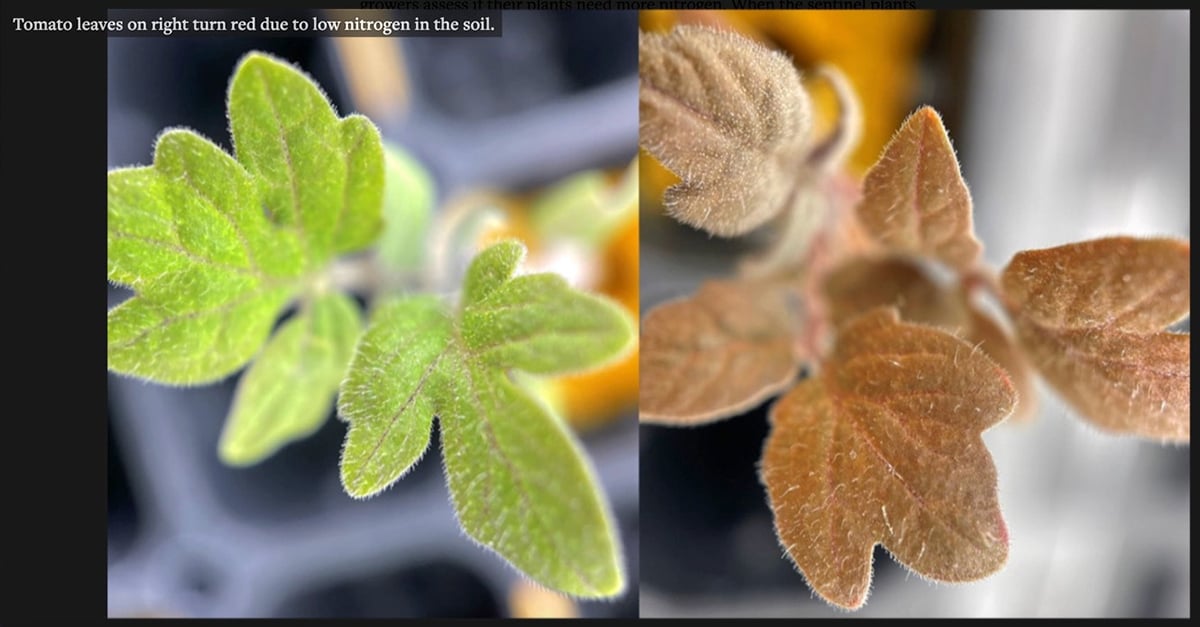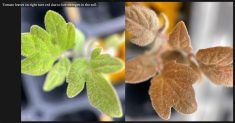Considering the record rainfall in many parts of Saskatchewan this year, it’s not surprising that records were also set for the amount of sclerotinia in canola.
A crop disease survey conducted this summer on 260 fields in Saskatchewan determined that sclerotinia was present in 92 percent of canola crops. In addition, 21 percent of all plants in the survey tested positive for the fungal disease, the highest disease incidence since the survey began in 1999.
“The next closest was in 1999 and 2000. It was 17 percent in 1999 and 14 percent in 2000,” said Faye Dokken- Bouchard, a plant disease specialist with Saskatchewan Agriculture.
Read Also

American researchers design a tomato plant that talks
Two students at Cornell University have devised a faster way to detect if garden plants and agricultural crops have a sufficient supply of nitrogen.
The sclerotinia data was generated from a canola disease survey conducted by Agriculture Canada, provincial government scientists and private industry consultants. The survey looked at more fields in Manitoba, Saskatchewan and Alberta compared to previous years because the industry asked for detailed information on diseases affecting canola.
“This concern came from the Canola Council (of Canada) and the growers because they wanted more of an intense survey done,” said Debbie McLaren, a research scientist with Agriculture Canada in Brandon.
On top of testing more canola fields in Western Canada, the scientists also included a new wrinkle in the 2010 survey. Severity of the disease was ranked on a scale from zero to five, with zero representing no symptoms of sclerotinia and five representing a lesion on the lower stem of the plant with potential effects on seed formation.
Across Saskatchewan, scientists ranked the disease severity as 2.7. However, it’s difficult to put that figure in context because this was the first year of measuring severity.
In Manitoba, sclerotinia was detected in 88 percent of fields in the survey, 27 percent of plants had some level of the disease and severity was ranked at 2.4. Last in Manitoba, researchers found sclerotinia in 91 percent of fields and 18 percent of plants in the survey.
In Alberta, 64 percent of fields had sclerotinia and technicians found the white mould in 15 percent of the canola plants.
“That strikes me as relatively high for Alberta,” said Ralph Lange, a plant pathologist with Alberta Innovates, a provincial research agency.
The highest amount of sclerotinia in the province was found in east-central Alberta, in the region around Wainwright and Provost. In that area, the disease was detected on 26 percent of canola plants.
Lange said the weakness of the Alberta data is that the province hasn’t surveyed diseases in canola for several years. He couldn’t remember precisely, but he thought the last survey was done in the early 2000s.
One of the objectives of collecting detailed information on diseases such as sclerotinia is that it offers another risk management tool for producers, Dokken-Bouchard said.
“We can’t predict the weather but we can predict which crops we’re putting into the ground … and which diseases we have seen in the past.”
For instance, a factor contributing to the high levels of sclerotinia in Saskatchewan this year was that the disease was present in nine percent of canola plants in 2009. The median disease incidence in the province, based on data from 1999 to 2010, is six percent.
If producers knew more sclerotia was in the soil this spring, it would indicate a higher probability of a disease outbreak this year.
Dokken-Bouchard said this type of information will help canola growers make better decisions regarding rotation and fungicide application.
SURVEY RESULTS
Federal and provincial government plant pathologists conducted a comprehensive canola disease survey in 2010, testing hundreds of fields in Manitoba, Saskatchewan and Alberta. Highlights from the survey are listed below. Detailed results will be posted on-line in the Canadian Plant Disease Survey Journal.
•Blackleg was found on 54 percent of the 260 tested fields in Saskatchewan and in 10 percent of all plants tested in the province.
•In west-central Saskatchewan, 27 percent of plants had some level of sclerotinia, the highest incidence of all regions in the province.
•In Manitoba, sclerotinia was observed in 88 percent of canola crops. It was found in 91 percent of fields in the survey in 2009, 94 percent in 2008 and 80 percent in 2007.
•Sclerotinia was found in 64 percent of fields surveyed in Alberta. The provincial average was skewed lower by the Peace River region, where dry conditions restricted the development of fungal disease.















